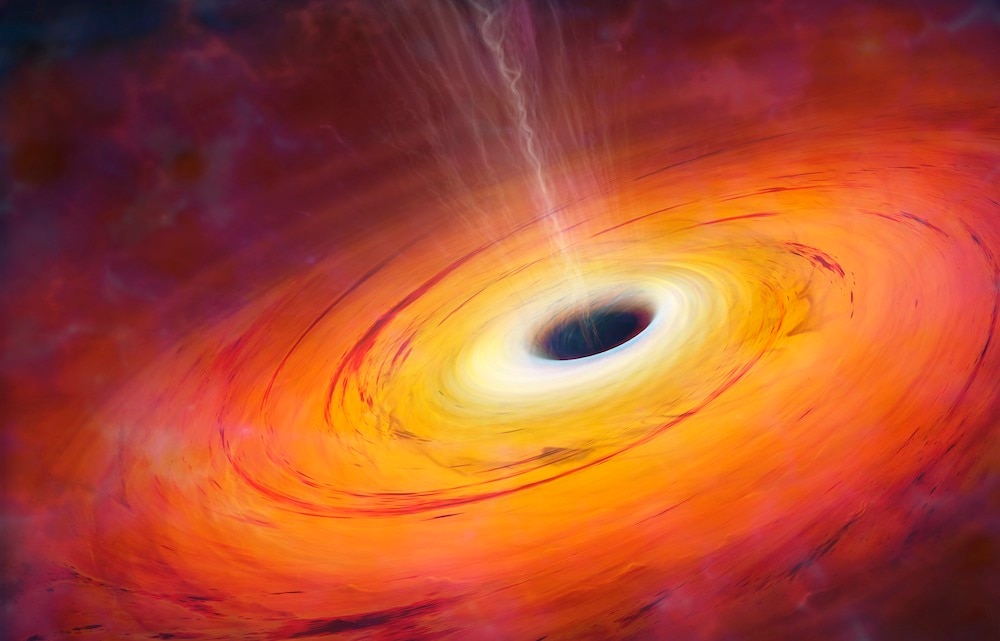Create a free profile to get unlimited access to exclusive videos, sweepstakes, and more!
Where are all the monstrous, massive, missing black holes?
Most telescopes can make out things human eyes would fail spectacularly at seeing, but not huge black holes.

How can you miss a monster of a black hole when its accretion disc alone should be bright enough to give away its lair? Astronomers have been asking our telescopes the same question.
While most ground-based telescopes can make out things the human eye would fail spectacularly at seeing, they have never been able to glimpse a black hole larger than 20 solar masses. But why? Massive stellar-mass black holes located on the galactic plane (where most of its mass exists) are shrouded in dust and gas that visible light cannot see. They instead have to be detected by the gravitational waves they emit, which are sometimes mistaken for aliens.
By the way, massive stellar-mass black holes shouldn’t be confused with supermassive black holes, which lurk in active galactic nuclei. Those are a whole other beast to deal with.
Astronomer Peter Jonker of SRON and the University of Radboud in the Netherlands led a team, whose findings were recently published in The Astrophysical Journal, who found out why the massive stellar-mass black holes can be “heard” by gravitational wave detectors like LIGO and Virgo, but not seen. We can “hear” them from Earth via the intense gravitational waves they spew out as they merge with stars or other black holes. However, they still elude our telescopes.
“Supermassive black holes will not get such a large push from formation processes as lighter black holes, will stay in the plane of the Milky Way,” Jonker told SYFY WRIE. “However, there is also a lot of dust and gas there, which hinders our telescopes because it absorbs light.”
This also explains why telescopes that remain grounded cannot see smaller black holes. The massive stars that are eventually doomed to be black holes in our galaxy also spawned here. Black holes can form when a massive star explodes into a supernova death, or when a much larger star collapses into itself. Explosions push lesser-mass black holes above the Milky Way’s plane and past the gas and dust that plagues observations of larger ones. That could drastically change once the James Webb Space Telescope (JWST) takes off near the end of this year.
JWST can see in near-infrared, which is how it should be able to catch sight of supermassive black holes. Infrared light is not absorbed by dust and gas as visible light is. Its longer wavelengths can fly right past particles that would normally get in the way of the visible light relied on by most ground-based telescopes, meaning dust and other floating particles are transparent to infrared light. This should give us an unprecedented view of supermassive black holes — at least their accretion discs, as seen in the viral image of the M87 black hole.
“JWST won’t have Earth’s atmosphere between us and the black hole whose mass we want to measure, either,” said Jonker. “Also, JWST is a big telescope, so we can obtain the measurements necessary to determine the mass of black hole systems that are still in the galactic plane.”
Because infrared vision is just one of its superpowers, JWST will also be able to select just the right star to keep an eye on when seeking out a potential partner in a supermassive black hole merger. Jonker and his team have already used NASA’s Chandra X-ray satellite to observe areas in the galaxy where black holes are stripping gases and other materials from their companion star, pulling matter in with gravity as the objects approach each other in a gradual death spiral. Chandra has already caught sight of some suspects for JWST to further investigate.
Jonker is hoping that JWST will be able to see merging black holes as massive as those that LIGO and Virgo detected by their gravitational waves. He wants to study them with X-ray satellites as well, to have the advantage of both X-ray and infrared vision, kind of like Superman.
“Observing in near-infrared and X-ray wavelengths will allow us to measure black hole mass and the rate at which they spin around their axis,” he said. “These parameters and the properties of their companion stars can tell us how they formed, which is still not well understood.”


























